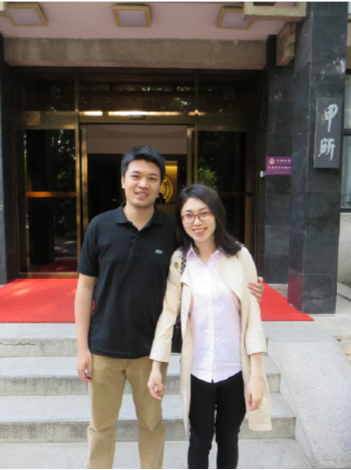Author: Niral Shah

Our day started off like any other in Beijing with a bright and early breakfast at the Tsinghua University hotel, but unlike other days, this day was special as it was our last in Beijing. With heavy hearts and full bellies, we piled into a Tsinghua bus with our luggage to take us straight to the Beijing South Railway Station. Two of our Tsinghua student hosts joined us to the station to say one last goodbye – just another example of the great hospitality we received throughout our trip in China.
We arrived at the station well before our departure which gave all of us some time to relax and gave me time to learn about the high speed train. The Beijing-Shanghai high speed railway, also known as Jinghu, is the world’s longest high speed line constructed in a single phase. It connects two major economic powerhouses serving close to a quarter million passengers daily and connecting a quarter billion people that live along the railway. Although the railway can operate a maximum speed of 380 km/h (236 mph), the average commercial speed is just above 300 km/h (186 mph) in order to reduce operating costs and to increase the longevity of the line. At that pace, the high speed train races across 1,318 kilometers (816 mi) in close to 5 hours, cutting travel time in half compared to alternatives.
Traveling through mainland China gave us a new perspective compared to the sprawling capital. The region between Beijing and Shanghai is at times bustling with activity in rapidly growing cities and at times quiet in the rural farmland. Unlike Beijing which is practically teeming with history and personality, the new cities popping up along the rail line are carbon copies of each other with construction crews working nonstop to build identical high-rises to support the massive population shift from rural towns to the urban cities. In between the new cities, we saw endless miles of crop and clear blue sky, much like in the US.
“After a long meal, we walked through brightly lit streets to the Bund and relaxed watching the river pass by and the Shanghai skyline behind it.”
As is a common theme for our trip, our dinner was unique and spectacular. We ate in a traditional Chinese hotpot style restaurant just across the street from the Marriot. At the center of the table, there were two boiling pots of broth surrounded with thinly cut meats and raw veggies. Rarely waiting our turn, we grabbed the meats and veggies and dipped them into the boiling broth to cook them. After a long meal, we walked through brightly lit streets to the Bund and relaxed watching the river pass by and the Shanghai skyline behind it.


